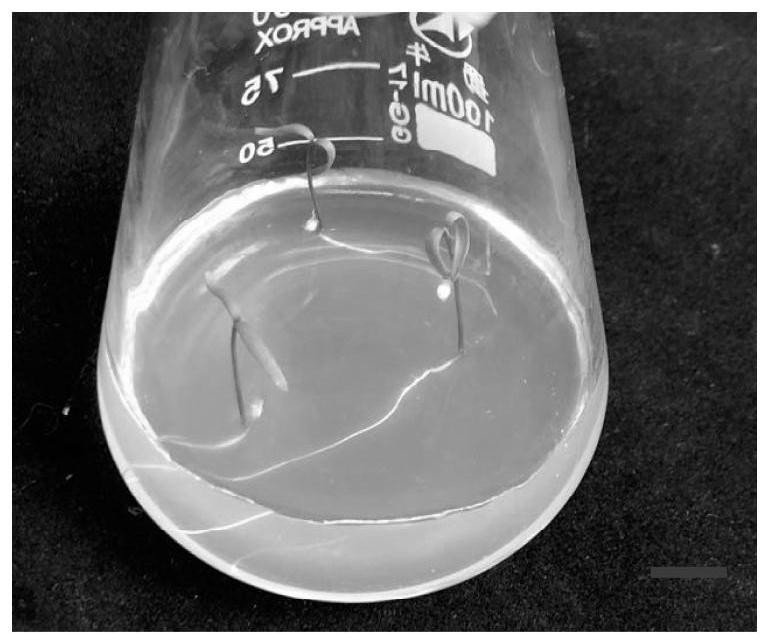A method for in vitro regeneration of quinoa cotyledon nodes
An in vitro regeneration and wheat technology, applied in the field of plant tissue culture and biology, can solve the problems of inseparable and lack of high-efficiency in vitro regeneration system of quinoa, and achieve the goals of reducing damage, increasing callus induction rate, and increasing survival rate Effect
- Summary
- Abstract
- Description
- Claims
- Application Information
AI Technical Summary
Problems solved by technology
Method used
Image
Examples
Embodiment 1
[0033] (1) Seed disinfection: Rinse the plump quinoa seeds with sterile water, treat with 5‰ potassium permanganate solution for 3 minutes, then treat with 10% sodium hypochlorite solution for 15 minutes, rinse with sterile water for 5 times, and dry the material with filter paper surface moisture, inoculated into MS basic medium, and obtained sterile seedlings after culturing for 5 days ( figure 1 ). The amount of sucrose contained in the medium was 30g / L, the amount of agar powder contained was 5.5g / L, and the pH of the medium was adjusted to 5.8; the culture conditions were 25±2°C, the light intensity was 2000-3000lx, and the light was 12h / L. d.
[0034](2) Pre-cultivation of explants: the sterile seedlings in step (1) are cut with a scalpel to cut the cotyledon nodes of about 2 mm, and the existing bud spots are erased with a scalpel, and then placed in the pre-culture medium and cultured for three days. , the pre-medium was MS as the basic medium, and 6-benzylaminopuri...
PUM
 Login to View More
Login to View More Abstract
Description
Claims
Application Information
 Login to View More
Login to View More - R&D
- Intellectual Property
- Life Sciences
- Materials
- Tech Scout
- Unparalleled Data Quality
- Higher Quality Content
- 60% Fewer Hallucinations
Browse by: Latest US Patents, China's latest patents, Technical Efficacy Thesaurus, Application Domain, Technology Topic, Popular Technical Reports.
© 2025 PatSnap. All rights reserved.Legal|Privacy policy|Modern Slavery Act Transparency Statement|Sitemap|About US| Contact US: help@patsnap.com



